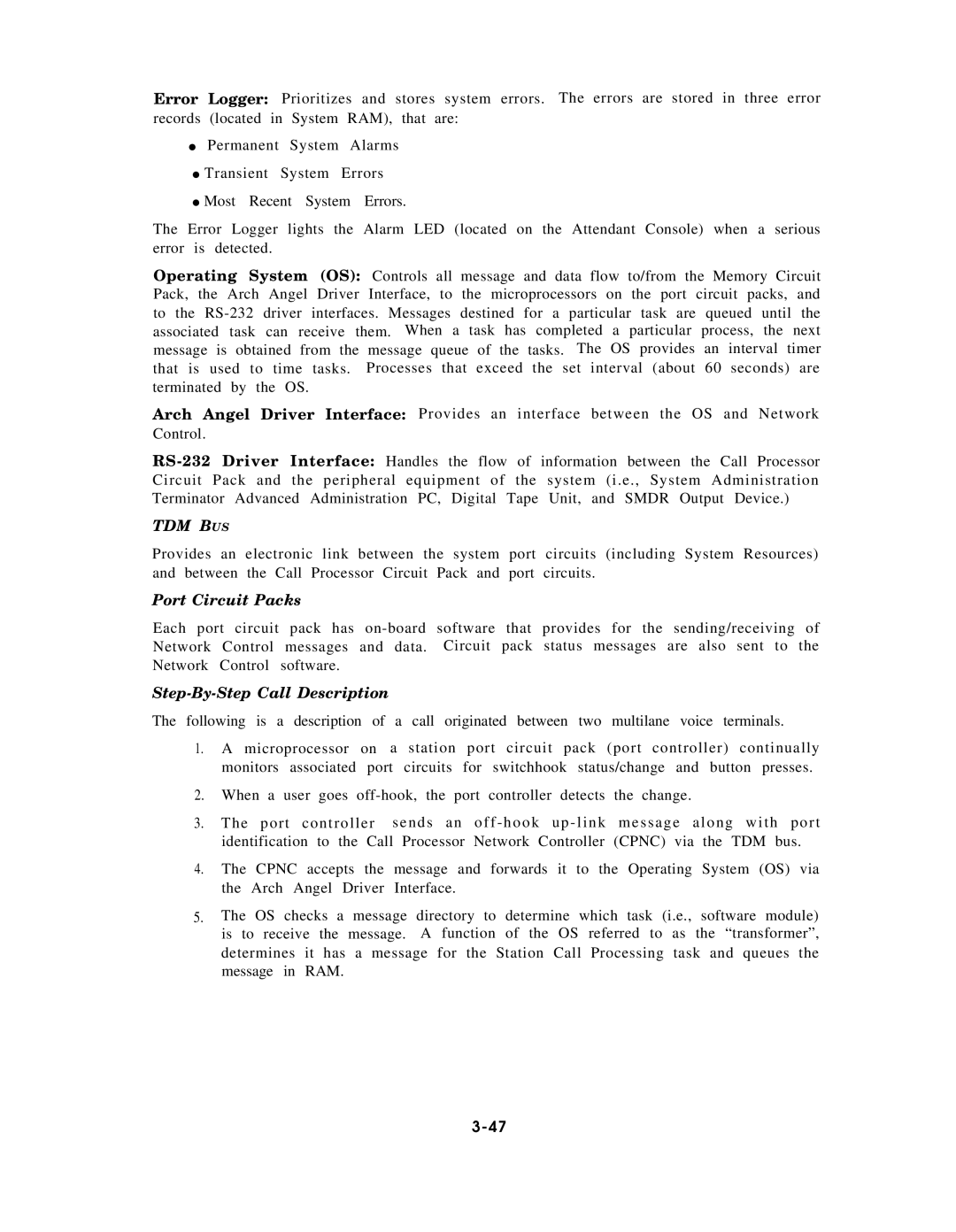Error Logger: Prioritizes and stores system errors. The errors are stored in three error records (located in System RAM), that are:
●Permanent System Alarms
●Transient System Errors
●Most Recent System Errors.
The Error Logger lights the Alarm LED (located on the Attendant Console) when a serious error is detected.
Operating System (OS): Controls all message and data flow to/from the Memory Circuit Pack, the Arch Angel Driver Interface, to the microprocessors on the port circuit packs, and to the
Arch Angel Driver Interface: Provides an interface between the OS and Network Control.
TDM BUS
Provides an electronic link between the system port circuits (including System Resources) and between the Call Processor Circuit Pack and port circuits.
Port Circuit Packs
Each port circuit pack has
Step-By-Step Call Description
The following is a description of a call originated between two multilane voice terminals.
1.A microprocessor on a station port circuit pack (port controller) continually
monitors associated port circuits for switchhook status/change and button presses.
2.When a user goes
3.The port controller s e n d s a n o f f - h o o k u p - l i n k m e s s a g e a l o n g w i t h p o r t
identification to the Call Processor Network Controller (CPNC) via the TDM bus.
4.The CPNC accepts the message and forwards it to the Operating System (OS) via the Arch Angel Driver Interface.
5. The | OS checks a | message | directory to | determine | which task (i.e., software module) |
is to | receive the | message. | A function | of the OS | referred to as the “transformer”, |
determines it has a message for the Station Call Processing task and queues the message in RAM.
